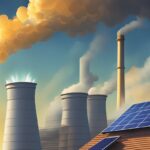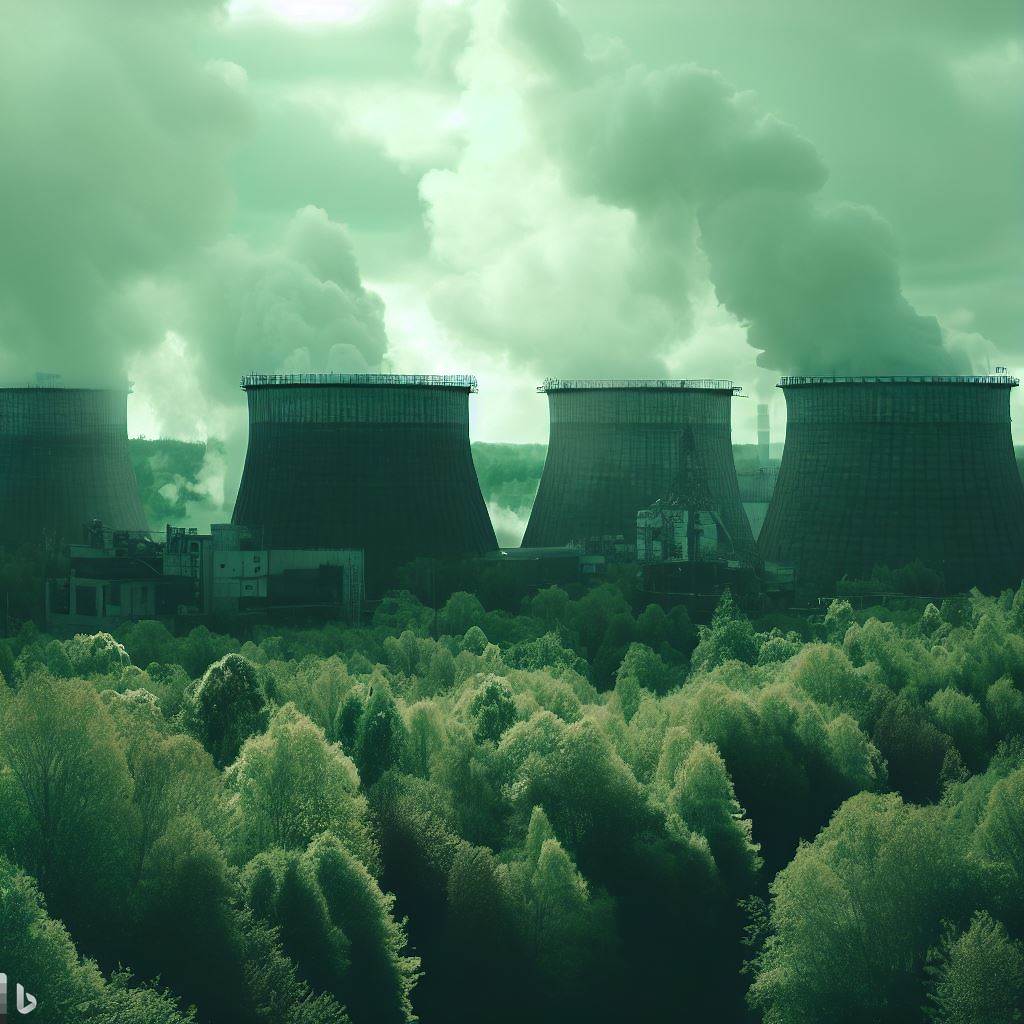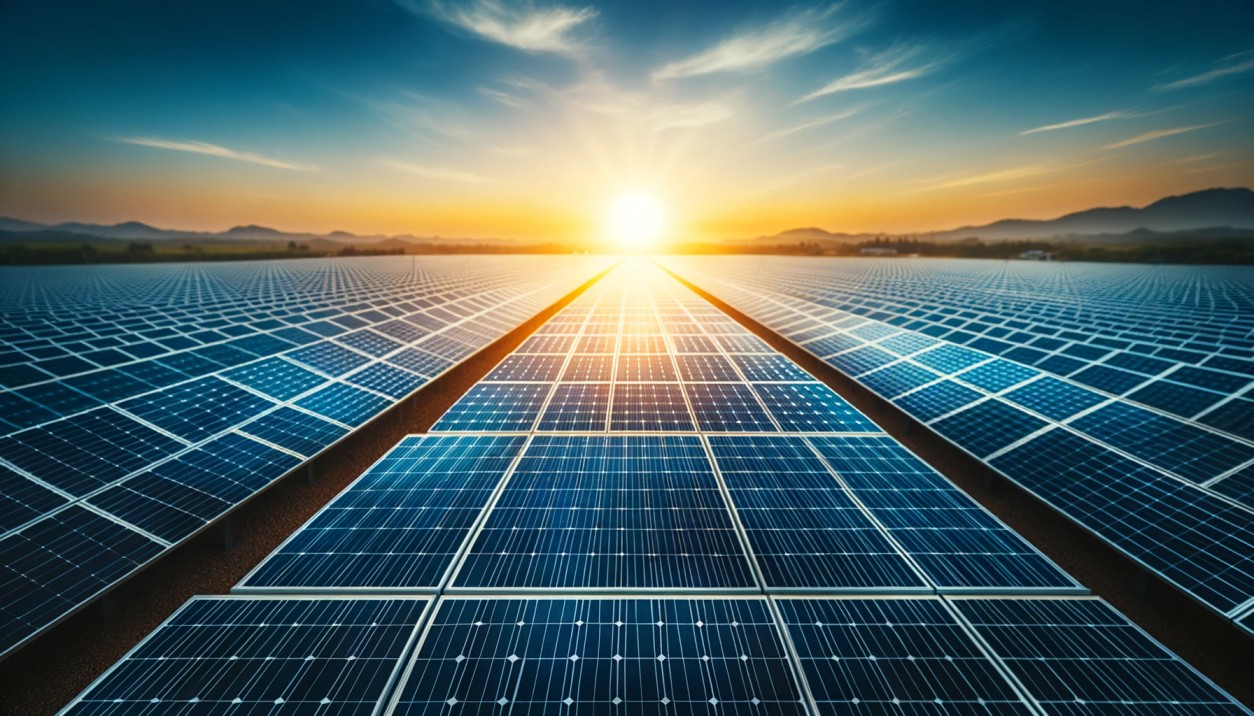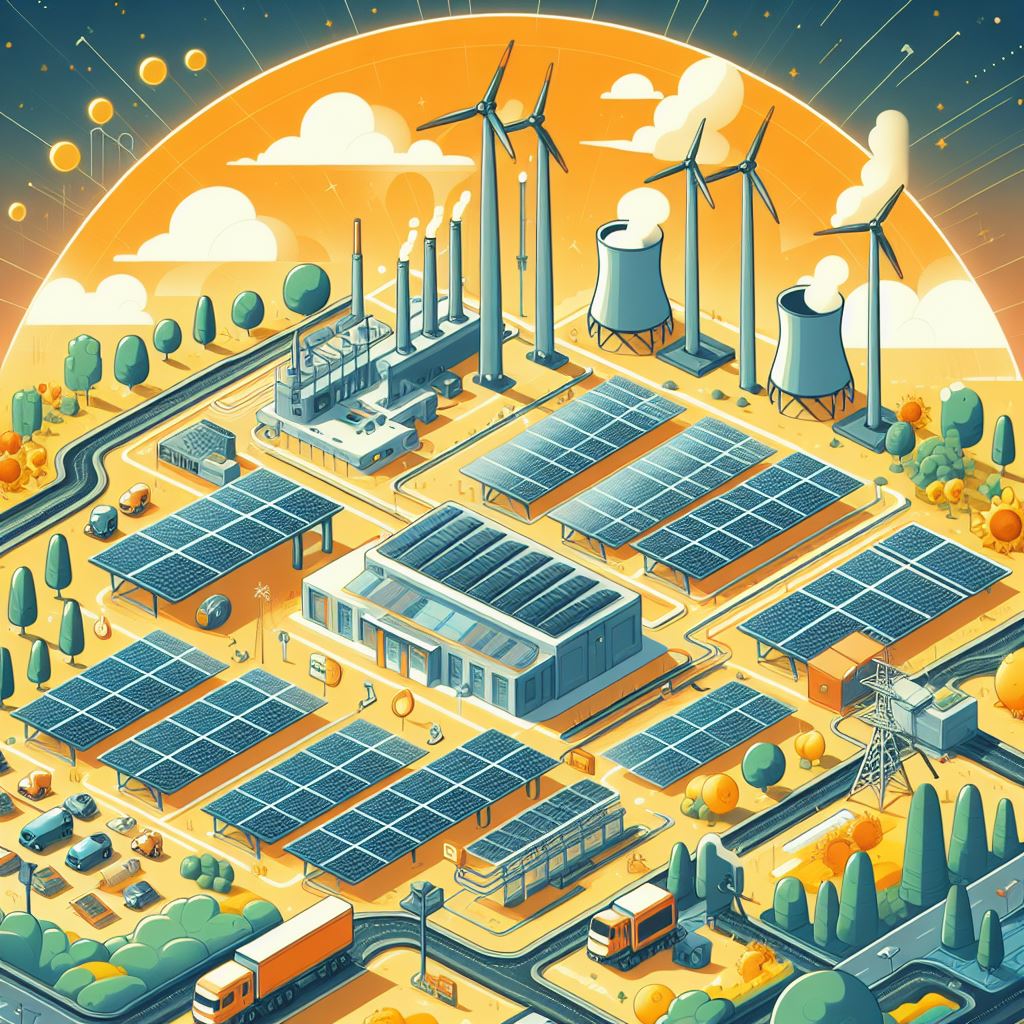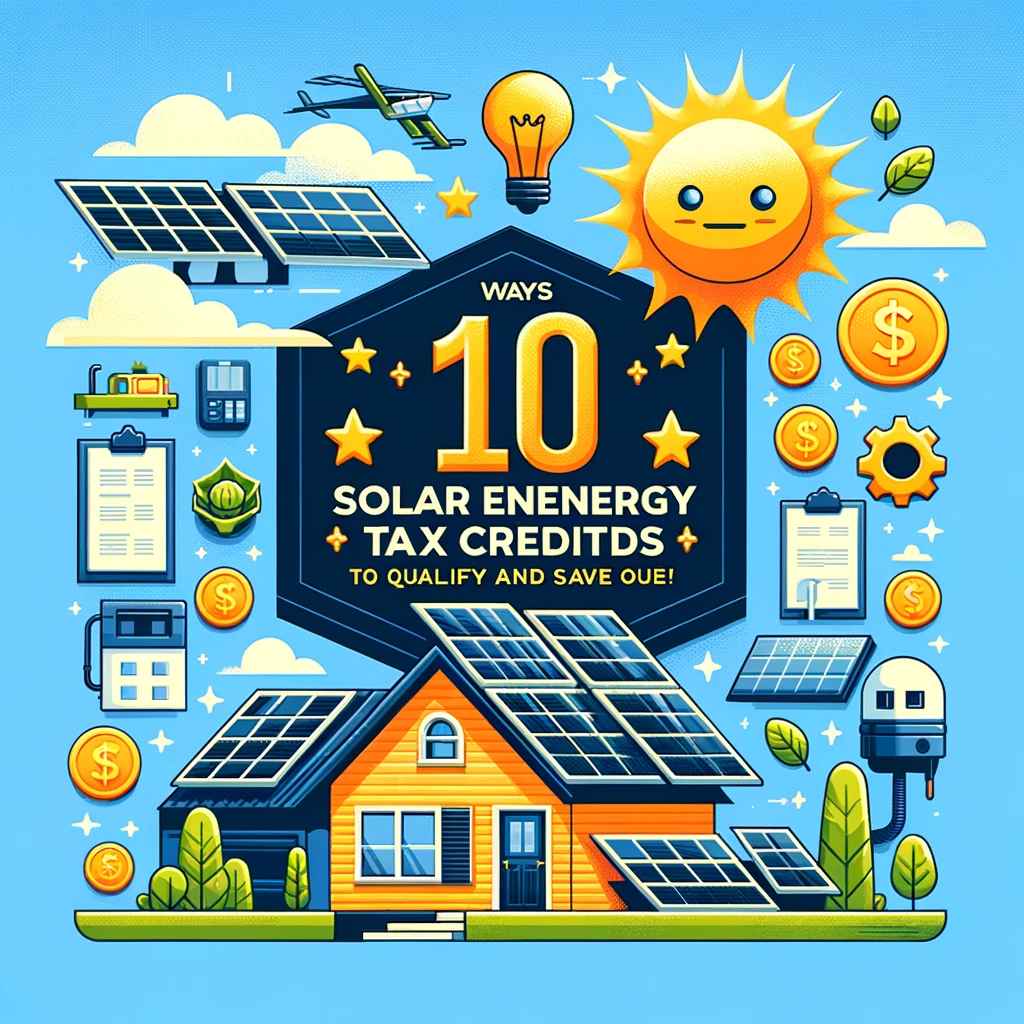Introduction
Nuclear energy, the superhero of electricity production, has been the topic of endless debates and controversies. What makes it so special? Well, let’s dive into it! Nuclear energy refers to the process of obtaining electricity from the nucleus of an atom. Not your average source, huh? It’s all about those tiny particles creating a massive amount of power.
To produce nuclear energy, we use nuclear reactors. Take your pick: pressurized water reactors, boiling water reactors, or maybe even a fancy advanced reactor if you’re feeling experimental. Now, let’s explore the incredible pros and the not-so-pleasant cons of this intriguing energy source!
What is Nuclear Energy?
Introduction:
Nuclear energy. It’s like the wild child of the energy family. Simultaneously controversial and intriguing, nuclear energy has sparked countless debates and fascinated scientists and policymakers since its discovery. But what exactly is nuclear energy? How does it work? And what makes it so different from other energy sources? Well, my curious readers, let’s dive into the fascinating world of nuclear energy and unravel its mysteries together.
The Basic Concept of Nuclear Energy:
Nuclear energy is all about unleashing the incredible power hidden within the nucleus of an atom. Now, I know what you’re thinking – “Hold up, atoms? Isn’t that stuff I learned in high school chemistry?” Yes, my observant friend, you’re absolutely right! Atoms are the tiny building blocks of the universe, and they consist of a dense nucleus surrounded by a cloud of electrons. When we tap into the nucleus, that’s where the real magic happens.

How Nuclear Energy is Produced:
To harness nuclear energy, scientists use a process called nuclear fission. It’s like splitting the atom, but without all the messy explosions (well, most of the time). By bombarding certain isotopes, such as uranium-235, with neutrons, we can cause the nucleus to split into smaller fragments, releasing a tremendous amount of energy in the process.
Now, here’s where things get interesting. This energy, released as heat, can be used to generate steam. And as we all know, steam means power! The steam drives a turbine, which, in turn, spins a generator, producing electricity. Voila! The concept behind nuclear energy production is simple, yet mind-bogglingly amazing.
Different Types of Nuclear Reactors:
Nuclear reactors come in different shapes and sizes, each with its own quirks and functionalities. Let’s take a quick tour, shall we?
First up, we have Pressurized Water Reactors (PWRs). These babies rely on enriched uranium fuel and use highly pressurized water to cool the reactor core and transfer heat to the steam generator. PWRs are the most commonly used reactors worldwide, providing plenty of electricity to power our gadgets and gizmos.
Next, we have Boiling Water Reactors (BWRs). As the name suggests, these reactors allow water to boil directly within the reactor core, which creates steam for power generation. BWRs have a simpler design compared to PWRs, making them slightly more cost-effective.
Lastly, we have the fancy-sounding High-Temperature Gas-Cooled Reactors (HTGRs). These reactors use helium or a mixture of helium and graphite as a coolant. With their higher operational temperatures, HTGRs show great potential for efficient power generation and even hydrogen production.
So, there you have it! The basics of nuclear energy, how it’s produced through nuclear fission, and the different types of reactors that make it all possible. Pretty neat, right? Stay tuned as we unravel the pros and cons of this controversial energy source. But first, a quick coffee break!
Advantages of Nuclear Energy
Ah, nuclear energy! The ultimate power hidden within those tiny atoms. Let’s explore the bright side of harnessing this powerful force and understand why some people are head over heels for it.
First up, we have low greenhouse gas emissions. Yes, you heard that right! Nuclear energy emits significantly less greenhouse gases than other traditional energy forms, like gas or coal. So, if you’re worried about the planet turning into a gigantic oven, nuclear energy is here to save the day.
Next, we have high energy production. Nuclear power plants are like the Energizer Bunny—they keep going! These plants have an exceptional ability to continuously produce a large amount of electricity. You can power an entire city for days with a single uranium pellet. Talk about being energy efficient!
Now, let’s talk about reliable power supplies. Do you know those friends who always come through in times of need? Well, nuclear energy is just like that, friend. It provides a stable and consistent electricity supply, making it a reliable source for meeting the world’s energy demands. No more flickering lights or power outages during crucial moments.
As if that wasn’t enough, nuclear energy is also cost-effective. Of course, building a nuclear power plant requires a substantial initial investment. But once it’s up and running, it’s like having a gold mine that doesn’t stop producing. The cost of uranium, the fuel used in nuclear reactors, is relatively low compared to fossil fuels. So, you get a long-term, cost-effective energy solution. It’s like hitting the jackpot without even buying a lottery ticket!
Now, keep in mind, these advantages come with their fair share of challenges and concerns. It’s not all sunshine and rainbows, my friend. Remember, with great power comes great responsibility. We’ve got to take a closer look at the flip side in the next section. But let’s not venture into the dark side just yet.
Low greenhouse gas emissions, high energy production, reliable power supply, and cost-effectiveness are the winning qualities of nuclear energy. It’s like having a superhero dazzling us with its astounding capabilities in the energy world. So, before you start writing off nuclear energy completely, it’s essential to consider the advantages it brings to the table.
But wait, don’t get too comfortable. Because just like any superhero, nuclear energy has its kryptonite—a set of disadvantages we can’t ignore. So, put on your capes and get ready to dive deeper into the world of nuclear energy in the next section. Trust me, it’s going to be electrifying!
Disadvantages of Nuclear Energy
When it comes to nuclear energy, it’s not all sunshine and rainbows. Sure, it has its perks, but let’s take a closer look at the dark underbelly of this powerful source of electricity. Brace yourself because we’re diving into the disadvantages of nuclear energy.
First on our list is radioactive waste disposal. You see, nuclear reactors produce radioactive waste that can remain dangerous for thousands of years. That’s right, we’re talking about waste that could potentially outlive all of us. Finding a safe and secure way to store this waste is like looking for a needle in a haystack. Not to mention, accidents like the Chernobyl and Fukushima disasters have shown us just how catastrophic it can be when radioactive materials are mishandled.
Speaking of accidents, the risk of meltdowns is a serious concern in the world of nuclear energy. Although safety measures are in place, humans are prone to making mistakes. One small slip-up, and boom! You’ve got a nuclear disaster on your hands. Just think about the potential consequences of a major meltdown – devastation, long-lasting health effects, and whole regions rendered uninhabitable. Makes you reconsider that nuclear-powered toaster, doesn’t it?
But wait, there’s more! Nuclear energy also comes with the delightful little gift of nuclear proliferation. The use of nuclear technology for peaceful purposes, like generating electricity, can unintentionally pave the way for countries to develop nuclear weapons. It’s the domino effect – once one country goes down that path, others may follow suit. And bam! We’ve got a serious threat to global security. Who needs peace and harmony when we can have a nuclear arms race, right?
If radioactive waste, meltdowns, and nuclear Armageddon weren’t enough to keep you up at night, here’s another nugget to ponder: limited uranium resources. While uranium is the fuel that powers nuclear reactors, it’s not an infinite resource. In fact, some experts predict that we may run out of easily accessible uranium within the next few decades. So, what happens then? Do we start hunting for uranium like our lives depend on it? Or do we go back to using candles and hoping for the best?
Now, before you start trading in your nuclear-powered time machine for a solar-powered one, let’s take a step back and acknowledge that nuclear energy does have its merits. It’s a low-emission form of power generation, produces massive amounts of energy, offers a reliable power supply, and can even be cost-effective in the long run. But like any superhero, it also has its kryptonite.
So, there you have it – the not-so-glamorous side of nuclear energy. It’s like having a dazzling superstar with a closet full of skeletons. Nuclear waste, accidents, proliferation, and limited resources cast a shadow over this futuristic power source. It’s up to us to weigh the advantages against the disadvantages and decide if the risks are worth the rewards. Just remember, there’s always a price to pay, even for that shiny technology we call progress.
Now that we’ve dug into the downsides of nuclear energy, it’s time to put on our radiation suits and tackle the topic of safety measures and regulations. Stay tuned for more riveting tales from the world of nuclear energy! Just kidding, you won’t need a radiation suit, but it doesn’t hurt to be prepared, right?
Safety Measures and Regulations
When it comes to nuclear energy, safety is a top priority. Because we all know that nothing says “fun” quite like handling radioactive materials and potentially catastrophic accidents. That’s why there are strict safety protocols in place to ensure that nuclear power plants operate as safely as possible.
First and foremost, these protocols include rigorous training programs for all employees involved in the operation and maintenance of nuclear power plants. These programs cover everything from reactor operation to emergency procedures, ensuring that everyone knows exactly what to do in any given situation. So, rest assured, there’s no room for careless mistakes when it comes to nuclear energy.
On top of that, there are international nuclear watchdogs keeping a close eye on the industry. These watchdogs, like the International Atomic Energy Agency (IAEA), act as the nuclear energy police, making sure that all countries are adhering to the highest safety standards. So, even if you can’t trust your own government to keep things in check, you can trust the international community to have your back.
In the unlikely event of an emergency, nuclear power plants are required to have emergency preparedness measures in place. These measures include evacuation plans, emergency response teams, and communication systems. Because, you know, it’s always good to have a backup plan in case things go horribly wrong.
So, while nuclear energy may have its risks and drawbacks, it’s comforting to know that there are strict safety measures and regulations in place. After all, no one wants to live next to a ticking time bomb…unless, of course, you’re some sort of adrenaline junkie.
But hey, if strict safety protocols, international nuclear watchdogs, and emergency preparedness measures aren’t your cup of tea, there are always renewable alternatives to consider. So, stay tuned for the next section where we’ll explore the greener side of energy production. Trust me, it’s going to be electrifying!
Renewable Alternatives to Nuclear Energy
So, you’ve read all about the pros and cons of nuclear energy, and now you’re wondering if there are any alternatives? Well, fear not, my curious friend, because the world of renewable energy has some intriguing options up its sleeve.
First up, we have solar power. Ah, the sun, that fiery ball of gas that has been lighting up our lives for billions of years. And now, with the help of some sleek solar panels, we can harness its energy and power our homes and businesses. It’s like having a personal sunbeam at your disposal.
Next, let’s talk about wind power. Picture yourself standing on a hill, the wind blowing through your hair (warning: bad hair days ahead), and giant wind turbines slowly spinning in the distance. These majestic machines are actually converting that wind into usable electricity. It’s like having your own personal wind orchestra, producing clean energy symphonies.
Now, let’s venture into the world of hydroelectric power. Imagine standing by a roaring waterfall, feeling the mist on your face and the power of the water rushing by. That very water can be harnessed to generate electricity. It’s like having your own personal Niagara Falls, without all the tourists.
And last but not least, we have geothermal energy. Deep beneath the surface of the Earth, an abundance of heat is waiting to be tapped into. By using geothermal power plants, we can harness that heat and turn it into electricity. It’s like having your own personal lava flow, but without the danger of turning into a human torch.
So, there you have it, my inquisitive reader. Renewable alternatives to nuclear energy that are just waiting to be explored. Solar power, wind power, hydroelectric power, and geothermal energy are all viable options that can help us move towards a cleaner and greener future. So go forth and embrace the power of nature, in all its renewable glory.
Conclusion
Nuclear energy has its pros and cons. On the one hand, it offers low greenhouse gas emissions, high energy production, reliable power supply, and cost-effectiveness. On the other hand, there are concerns regarding radioactive waste disposal, the risk of accidents and meltdowns, nuclear proliferation, and limited uranium resources. It’s important to consider safety measures, including strict safety protocols, international nuclear watchdogs, and emergency preparedness measures. However, renewable alternatives such as solar, wind, hydroelectric, and geothermal energy should also be explored. Nuclear energy has its merits, but it’s essential to weigh them against the potential drawbacks.





